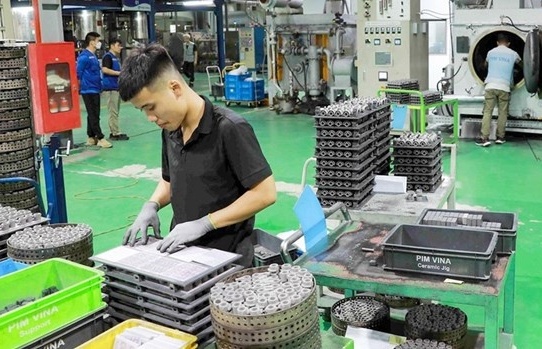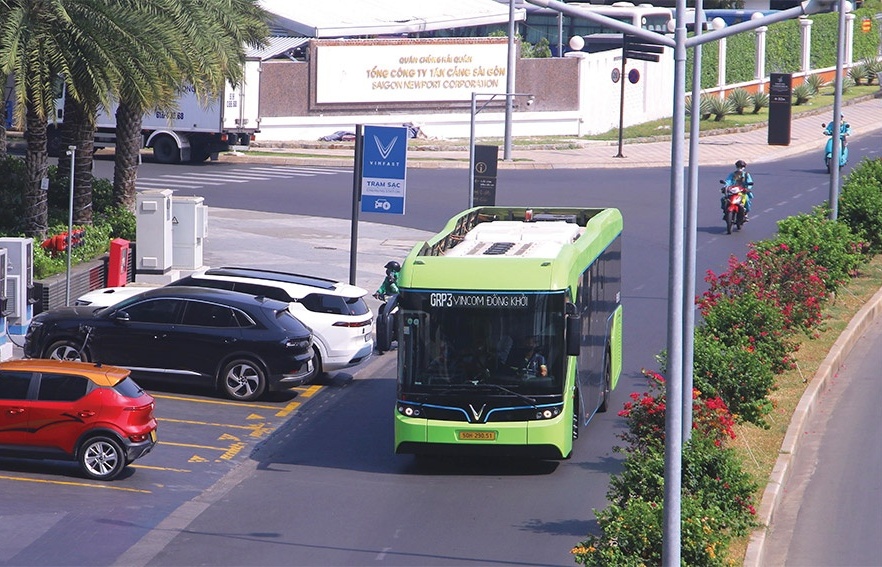Productivity-fuelled growth model on horizon
 |
| In the years ahead, economic growth will largely ride on labour productivity |
Released on January 1, Resolution No.01/NQ-CP on key tasks and solutions in the implementation of Vietnam’s socioeconomic development plan for 2018 stipulates that a national programme on labour productivity growth be developed. This programme is charged with increasing labour productivity by over 6 per cent this year from the 5.29 per cent in 2016 and the 6 per cent in 2017.
The resolution also targets a total-factor productivity (TFP) ratio in GDP of over 46 per cent, up from 40.68 per cent in 2016 and 44.13 per cent last year. TFP is a measure of the efficiency of all inputs in a production process. Increases in TFP usually result from technological innovations or improvements.
During a teleconference on Vietnam’s socioeconomic development two weeks ago, General Secretary of the Party Nguyen Phu Trong said that economic restructuring is closely linked with the renewal of the country’s growth model. He added that increasing labour productivity and the economy’s competitiveness “are our vital tasks in the time to come.”
“It is necessary to fully understand and be thoroughly aware that our country is building a growth model that is increasingly based on rising labour productivity as well as the economy’s quality and competitiveness,” Trong said.
“All resources are to be mobilised, allocated, and utilised in an effective manner in accordance with market signals and mechanisms,” he continued. “For higher growth quality, it is necessary to shift from an increase in production inputs to a rise in labour productivity and quality, and the increased application of science and technology.”
Nguyen Viet Thang, head of the Planning Section at X26 JSC—a producer of garments, footwear, and plastic and wooden products—told VIR that the Party and the government's policies on improving productivity “should include incentives for enterprises to import and use modern machinery and equipment for production.”
For example, under the Law on TechnologyTransfer, which was adopted in June 2017 and will take effect on July 1, 2018, firms will get tax incentives if they import machinery, equipment, materials, and means of transport that have yet to be produced in the country and are directly used for research and development activities, technological innovations, and/or technology transfer in Vietnam.
“Firms are awaiting clearer regulations so that they can really benefit,” Thang said.
Over the past few years, Thang’s company has imported many types of machinery and equipment for its production and trained many workers.
“Our company’s productivity has significantly improved. Previously, we needed about 50 workers to make 1,000 pairs of shoes per day, but now we need fewer than 40 workers to do the same job,” Thang said.
Though Vietnam’s labour productivity has improved at a better rate than that of the rest of the ASEAN, it remains low in absolute terms compared with the rest of the region, according to the General Statistics Office (GSO).
Based on purchasing power parity in 2011, Vietnam’s labour productivity was $9,894 in 2016, equal to 7 per cent of Singapore, 17.6 per cent of Malaysia, 36.5 per cent of Thailand, 42.3 per cent of Indonesia, 56.7 per cent of the Philippines, and 87.4 per cent of Laos, as reported by GSO.
| Three strategic breakthroughs for socioeconomic development in 2018
The government has just proposed major measures to facilitate socioeconomic development in 2018, including the implementation of three strategic breakthroughs and facilitating the country’s progress in Industry 4.0. |
What the stars mean:
★ Poor ★ ★ Promising ★★★ Good ★★★★ Very good ★★★★★ Exceptional
Latest News
More News
- Industrial parks within Vietnam keen on Taiwanese investment (April 17, 2024 | 23:00)
- Vietnam can emulate Taiwanese high-tech success (April 17, 2024 | 21:00)
- Capital influx from Taiwan builds up steam in Vietnam (April 17, 2024 | 19:00)
- Chip industry taking on new players (April 17, 2024 | 16:38)
- Support rises in semiconductor chip development in Vietnam (April 17, 2024 | 16:00)
- Beacon Investment Fund to expand Lotus Group's F&B operations (April 17, 2024 | 11:09)
- Public investment progress requires a stronger thrust (April 17, 2024 | 09:21)
- Disbursement delay deemed unacceptable (April 17, 2024 | 09:13)
- Lack of sand prompts alternatives for traffic projects (April 17, 2024 | 08:00)
- Vietnam asks Apple to make it global production base (April 16, 2024 | 16:11)
















 Mobile Version
Mobile Version